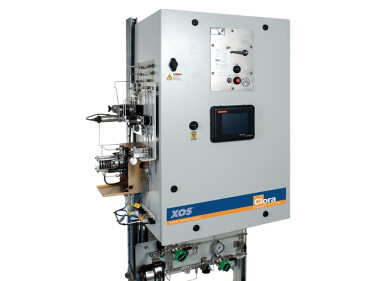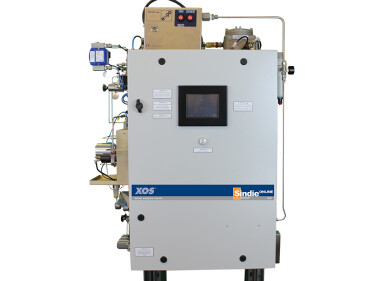Analytical instrumentation
Easy Vapour Pressure Measurement of Viscous Samples
Dec 11 2015
Eralytics vapour pressure tester ERAVAP uses the most modern vapour pressure methods ASTM D5191, D6378 e.g. for gasoline samples and ASTM D6377 for crude oil samples. None of these methods needs an external vacuum pump anymore as an internal piston creates the necessary vacuum above the liquid sample. This piston also controls the vapour to liquid ratio necessary for the measurement. The sample is then heated to the measurement temperature and the vapour pressure is determined. ASTM D6378 performs this expansion in three steps so that the vapour pressure of the liquid and the contribution of dissolved gases can be reported separately. Additionally it is completely free of any sample preparation steps required by other methods.
One drawback of available instruments, however, is the way they introduce the sample into the testing chamber. The instruments use the piston as a syringe pump sucking up the sample by moving the piston upwards. This works very well for samples with low viscosity such as gasoline. If the sample gets more viscous the piston actually creates a vacuum inside the measurement cell as the sample takes longer to flow into the measurement cell than the piston takes for the movement. Lowering the speed of the piston movement only helps to a certain extend as the time needed for filling highly viscous samples becomes more and more inefficient with rising viscosity.
Heating the sample prior to the measurement allows a faster introduction of the sample into the measurement cell. During the measurement the sample rests in the inlet and outlet tubes and has time to cool down. This cooled down parts of the sample can cause issues while emptying the measurement cell and rinsing the system afterwards. In the worst case the outlet tubing is simply clogged by the heavy sample.
Eralytics’ R&D team rose to that challenge as vapour pressure testing of heavy crude oils and viscous pure chemicals under the REACH directive of the European Union gain in importance. As a result ERAVAP can now be equipped with a temperature controlled inlet and outlet system. The metal inlet nut, all tubings and the outlet are heated to a preset temperature that can be as high as 70°C.
In combination with disposable inlet tubes or syringes for sample introduction it is now possible to test vapour pressures of heavy samples with ease in an automated way. Using this new heating system not only expands the range of samples accessible with ERAVAP, it also helps to make vapour pressure testing of viscous samples faster and easier.
Digital Edition
PIN 25.6 Buyers' Guide
January 2025
Buyers' Guide Directory - Product Listings by Category - Suppliers Listings (A-Z) Articles Analytical Instrumentation - ASTM D7042: The Quantum Leap in Viscosity Testing Technology -...
View all digital editions
Events
Jan 25 2025 San Diego, CA, USA
SPE Hydraulic Fracturing Technology Conference and Exhibition
Feb 04 2025 The Woodlands, TX, USA
Feb 05 2025 Guangzhou, China
Trinidad and Tobago Energy Conference 2025
Feb 10 2025 Point Lisas, Trinidad
Feb 11 2025 Lagos, Nigeria



















